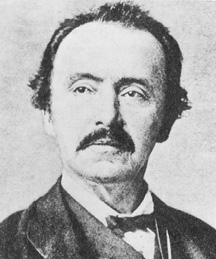John Michell
Beckles Willson, Henry (L)
Henry Beckles Willson (1869-1942) was a Canadian soldier, journalist and historian. Part of his prolific output was a 1902 booklet entitled Lost England: The Story of Our Submerged Coasts [1427], which was reprinted in 1986 as Lost Lyonesse: Evidence, Records and Traditions of England’s Atlantis with an introduction by John Michell. In the original book, Willson refers to the land, now lost, which stretched from Land’s End to the Scilly Isles without any mention of Atlantis. That reference was only used in the title of the more recent reprint.
Schliemann, Heinrich
Heinrich Schliemann (1822-1890) and Sir Arthur Evans famed as the discoverers of Troy and Knossos respectively are sometimes  claimed to have believed in the existence of Atlantis. John Michell quotes [0704.200] the following from Schliemann; “I have come to the conclusion that Atlantis was not only a great territory between America and the west coast of Africa, but the cradle of all our civilisation as well.” This extract is from a letter that was allegedly given to his grandson, Paul Schliemann. However, the letter in question was just part of a larger hoax perpetrated in 1912.
claimed to have believed in the existence of Atlantis. John Michell quotes [0704.200] the following from Schliemann; “I have come to the conclusion that Atlantis was not only a great territory between America and the west coast of Africa, but the cradle of all our civilisation as well.” This extract is from a letter that was allegedly given to his grandson, Paul Schliemann. However, the letter in question was just part of a larger hoax perpetrated in 1912.
Although Schliemann is credited with the discovery of Troy at Hissarlik in Turkey, he was not the first to suggest the site, in fact nearly a century earlier, ironically, in the year that Schliemann was born, Charles Maclaren (1782-1866), a Scot, also claimed that Hissarlik was the location of Troy in a work entitled, A Dissertation on the Topography of the Plain of Troy[541]. Others have cast doubt on the specific site identified by Schliemann.
L. Taylor Hansen noted that when Heinrich Schliemann declared that he was selling his business and going in search of Troy “archaeologists and others in the colleges burst into laughter.” However, when it was announced that he had found Troy, she tells us that “one of the scientists who had laughed the loudest and longest was so mortified that he committed suicide.” [572.22]
A somewhat harsh assessment of Schliemann’s site work noted that “he recklessly dug deeper and deeper—right through the ruins that were most likely the Troy he was looking for until he found a city that predated the Trojan war by at least 1,000 years. There’s even a big gap in the excavation map where King Priam’s palace was found. Schliemann removed it and threw it away. So we can all thank Schliemann for everything we do and don’t know about these ruins. He discovered the site, then demolished a lot of the important bits with his hamfisted approach.”(b)
The principal objection to Schliemann’s Troy was that the city he had located was too small to match the historical descriptions of Troy. The same might be said of many of the sites proposed as Plato’s Atlantis.
Schliemann also discovered many hundreds of swastikas throughout the Hissarlik site and is credited with bringing that symbol back to Germany, where it was later hijacked by the Nazis and came to represent evil oppression.(a)
Robert Temple notes in The Crystal Sun [928.39] that Schliemann excavated 49 convex crystal lenses that Temple has identified as optical artifacts. Despite earlier denials, these lenses along with the Trojan Gold, also known as Priam’s Treasure, discovered by Schliemann were plundered by the Russians after World War II and are still in their possession(c).
Revelation, The Book of
The Book of Revelation is invoked[102.121-125] by Frank Joseph, in attempts to link descriptions in it to the destruction of Atlantis. The proposed connection is rather tenuous and seems to be an attempt to expand on an idea of John Michell, who sees parallels between the destruction of Babylon and that of Atlantis.
Allan & Delair, in their book[014] on prehistoric catastrophes have suggested that the Book of Revelation is not wholly prophetic but in fact, contains references to the effect of a near miss by a large extraterrestrial body.
>In 1935, Kurt Bilau published Die Offenbarungen des Johannis – Ein Mondniederbruch vor 11 400 Jahren” entnommen (The Revelations of St. John – A Moon Collapse 11,400 years Ago p. 57-61). In it, Bilau endeavoured to support Hörbiger’s theories with his interpretation of biblical texts specifically from the Revelations of St John and the Book of Daniel(b)(c).<
H.S. Bellamy‘s book, The Book of Revelation is History [097] was published during WWII in which he linked this piece of apocalyptic literature with the ‘moon capture theory’ of Hanns Hörbiger.
Others see this final book of the Bible as foreshadowing the end of the world, comparable with the Ragnarok of Norse mythology(a).
(a) https://www.ancient-origins.net/myths-legends/story-ragnarok-and-apocalypse-001352
(c) The Revelations of John – Atlantisforschung.de (atlantisforschung-de.translate.goog) *
Michell, John
 John Michell (1933-2009) was educated at Eton and Cambridge. He had the strongly held view that ancient civilisations lived in greater harmony with nature and the zodiac, reflected in the alignment of ‘holy’ locations. This concept was elaborated in his 1969 book[206] in which he brought together ley lines, astro-archaeology, and sacred geometry. The book was revised as The New View Over Atlantis[0704] in 1983.
John Michell (1933-2009) was educated at Eton and Cambridge. He had the strongly held view that ancient civilisations lived in greater harmony with nature and the zodiac, reflected in the alignment of ‘holy’ locations. This concept was elaborated in his 1969 book[206] in which he brought together ley lines, astro-archaeology, and sacred geometry. The book was revised as The New View Over Atlantis[0704] in 1983.
A more sober treatment of the subject of astro-archaeology came from Peter Lancaster-Brown (1927-2005), who accused Michell of ‘manipulating’ Alexander Thom’s Megalithic yard so that he equated it “with all manner of numerical and metrical puzzles of the ancient world (complete with mystical overtones)” [1840.229]. Lancaster-Brown is also highly critical of Michell’s comments regarding the Great Pyramid, describing his ‘metrical schemings’ as ‘breathtaking’. [p232]
In The Lost Science of Measuring the Earth [1791], Michell and his co-author, Robin Heath claimed that “prehistoric Britons knew the dimensions of the Earth and had undertaken an accurate survey of the British Isles pre-3000 BC. My question is – why would they want to?
Michell was the author of many books(a) but never dealt directly with the leading questions surrounding Plato’s Atlantis, such as its location, time, or date. He uses Atlantis as a name to describe a very ancient global civilisation that possessed incredible powers such as the ability to fly and levitate the megalithic stones that are still to be seen throughout the planet. He offers lots of assertion and speculation, but very little hard evidence.
